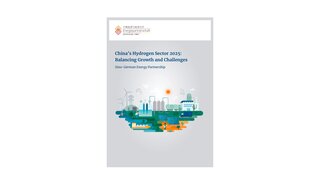China’s Hydrogen Sector 2025: Balancing Growth and Challenges
Keywords: Hydrogen; renewable energy; energy transition; decarbonisation; technology and standards; policy and regulation | Study published: August 2025
Hydrogen plays an increasingly visible role in China’s energy transition. The sector features a large production base, an expanding policy landscape at both national and local levels, and notable growth in electrolyser capacity. At the same time, coal remains the dominant source of hydrogen production, infrastructure development is limited, and technological gaps persist in several areas.
Key Findings
-
China produced 37 Mt of hydrogen in 2024, mostly coal-based, while renewable hydrogen production is scaling up through more than 90 projects.
-
Electrolysis capacity reached 3.5 GW in 2024 – 70% of global capacity – and is expected to rise to 50 GW by 2030.
-
Over 500 sub-national hydrogen policies have been issued, with local targets often exceeding national ambitions.
-
Transport and storage remain bottlenecks, with only 100 km of hydrogen pipelines currently in operation.
-
Financial incentives are shifting from mobility to production technology and applications beyond transport.
-
Standardisation is advancing, but gaps persist compared to the EU, US, Japan, and South Korea.
China’s Hydrogen Sector 2025: Balancing Growth and Challenges
Read the full Report
Published: August 2025
Pages: 60 | 2.0 MB
Authors: Vincent Fremery, Yin Yuxia, Hu Ning, Jury Flickenschild
Target Audience: This report is intended for policy makers, researchers, and private sector actors engaged in energy transition, hydrogen deployment, and international cooperation. It offers both a detailed snapshot of the current landscape and forward-looking insights into the sector’s trajectory.

